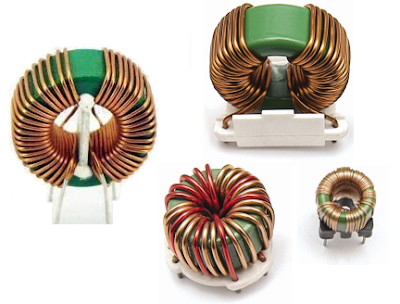EMI Requirements
Universal EMI guidelines indicate
the satisfactory levels of EMI discharges. Class A gadgets that are proposed
for business utilize have somewhat lower, more casual breaking points than
Class B gadgets, planned for local utilize. Class B limits are around 25
percent more unbending than those for Class A. The two primary bodies
controlling EMI Standards are the FCC and the European CISPR. In spite of the
fact that from multiple points of view these norms are comparative, the CIPSR necessities
are somewhat more tightly.
In spite of the fact that this
article is essentially about EMI defenselessness, for electromagnetic
similarity to exist, items ought to be invulnerable to for the most part
adequate levels of EMI and ought not create EMI that surpasses the levels
indicated in the models. Make a point to constrain over the top EMI radiation
from entering or leaving the load up at the passage point.
EMI Sources
EMI can begin from outside or
inner sources and can be directed over links, connectors and follows or
transmitted. EMI sources include:
High recurrence signals:
High-recurrence signals are more inclined to exorbitant radiation, particularly
if legitimate protecting isn't finished. At high frequencies, the inductive
impact of a follow or line increments, and as a flag is transmitted, its
attractive field couples the flag to contiguous lines. The impacts are
exacerbated by higher frequencies related with quick flag rise time.
Flag music: Square wave signals
contain odd music, especially the third, fifth, seventh and ninth music. These
music are wellsprings of EMI.
Drifters: External directed and
transmitted homeless people intensify EMI. Sources incorporate lightning,
electrical switch exchanging, control exchanging gadgets, control converters
and aggravations on power and correspondence lines.
Inner EMI sources: Fast flag
advances are solid EMI producers. These incorporate high-recurrence clock
signals, rapid information lines and expansive di/dt varieties because of
exchanging of fast rationale circuits.
Impedance jumbling:
High-recurrence motions in PCB circuits show transmission line qualities, and
reflection and ringing happen if the collector and transmitter impedances don't
coordinate the trademark impedance of the follow or line.
How Is EMI Coupled?
EMI is coupled to different
circuits through radiation or conduction. In the two occurrences, the level of
coupling and the size of the EMI increments with recurrence. Attributes of the
two coupling strategies include:
Radiation: EMI radiation happens
fundamentally at frequencies over 30 MHz. Inside, EMI can be transmitted by the
electric field created by a quick transient flag that uses a stub or circle as
a radio wire. EMI can likewise be inductively coupled. Follows without an
arrival way will create normal mode radiation and those with an arrival way differential
mode radiation. The radiation far field quality is specifically identified with
recurrence in single-finished circuits and to the square of the recurrence for
differential flag circuits.
Conduction: This happens when the
meddling sign goes along input links or interfacing wires. Coupling frequencies
are for the most part under 30 MHz. Any line entering or leaving a PCB load up
is vulnerable to coupling radiation. Interconnecting links between two sources
are a decent wellspring of EMI exchanging one way to the opposite side of the
board. In that capacity, long links help control EMI.
The EMI Core products are widely applied to power electronics, new energy, aerospace and aviation, information, communication, etc.
See Related Stories
- http://emicore.weebly.com/
- http://currenttransformercore.blogspot.com/
- https://commonmodecore.wordpress.com/
- https://medium.com/@catechchina/amorphouscore-1387f3b55c5e
Also Read:


Good information you shared. keep sharing.
ReplyDeleteSMPS Transformer Manufacturer in India | Toroidal Transformer in India
Very informative blog. thank you for sharing with us.
ReplyDeleteInductor Coil Manufacturer in India | Medical Isolation Transformer in India